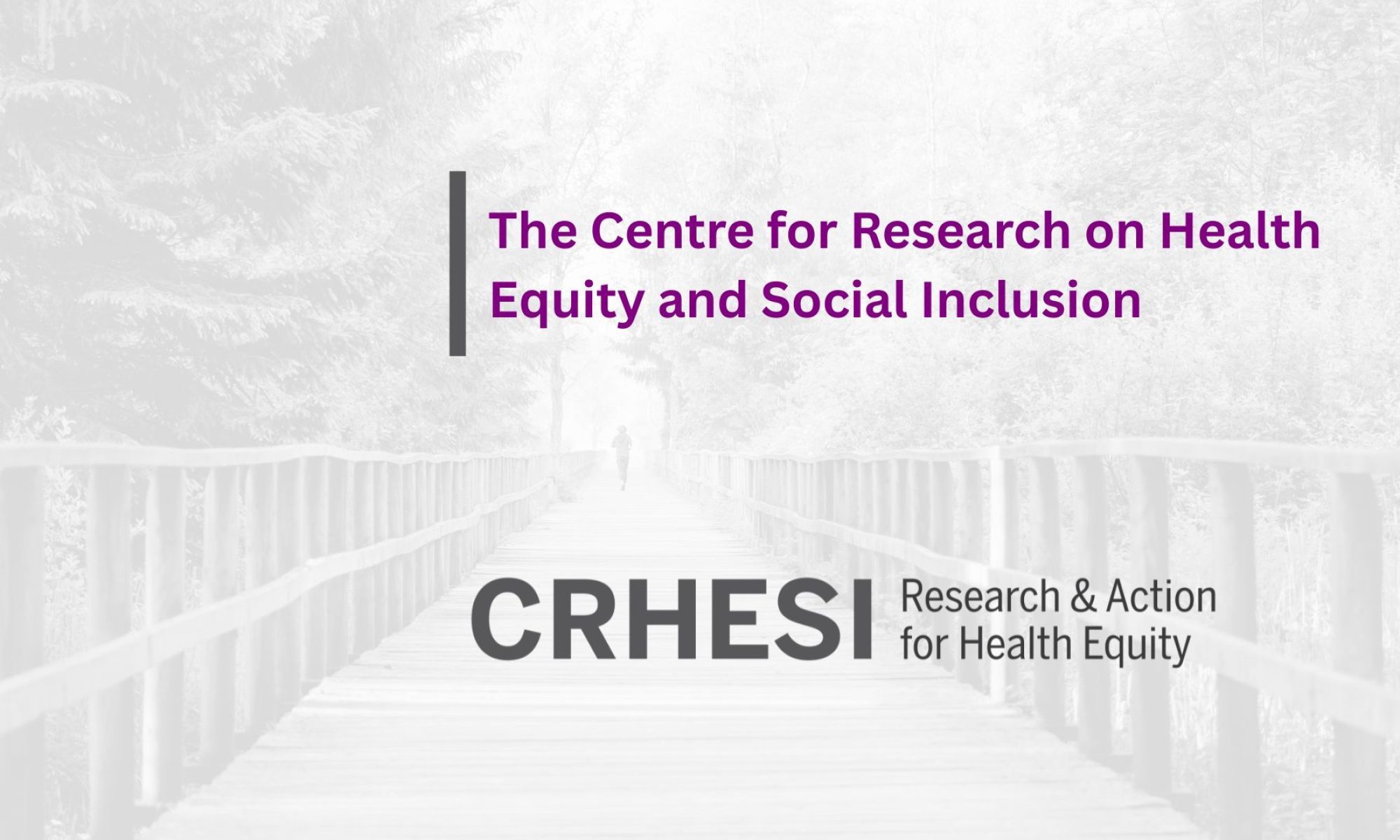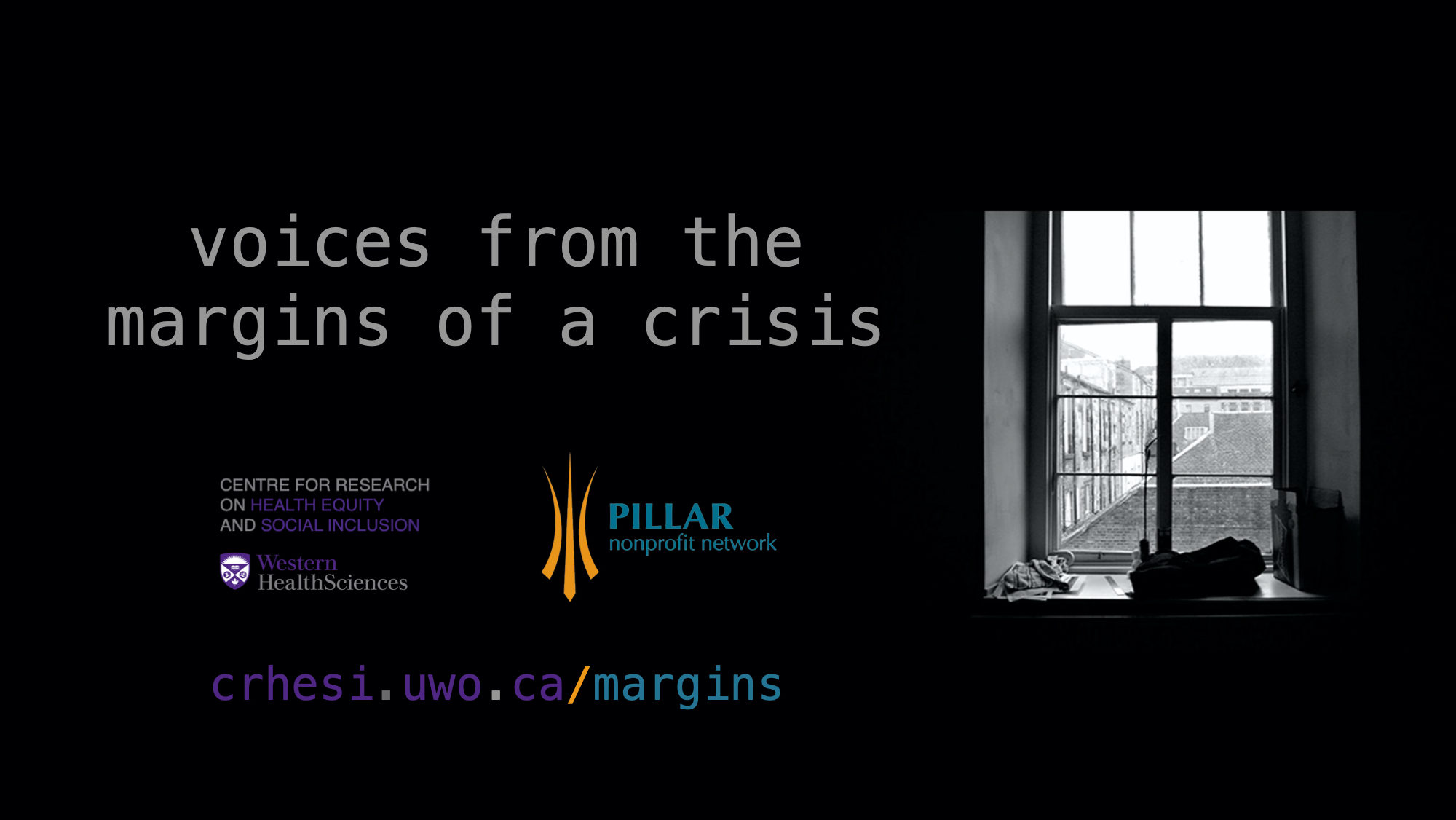Background
“The potential for a pandemic to exacerbate existing social and economic inequalities underscores the importance of considering a pandemic not only as a pressing public health issue, but also as an urgent matter of social justice” 1(p.33)
Inequities in social conditions which persist everyday life with serious implications for health and social inclusion are further heightened during pandemics such as the present COVID-19 situation worldwide. The net result is that burdens are unevenly distributed and serious hardships are intensified for those already facing serious hardships1. Individuals and groups often identified as socially and economically disadvantaged bear additional repercussions during times of crisis. Included, to name a few, are people experiencing poverty and homelessness, indigenous communities, people with disabilities, immigrants, refugees, older adults, and women and girls experiencing violence2,3,4. Moreover, public health measures practiced during infectious disease pandemics such as social distancing, school closures, avoidance of, and decreases in provision of, public transportation, and work from home orders further exacerbate socio-economic vulnerability. For example, schools can be a means for critical meals for children, parents staying at home can face risks with job loss, many individuals have no options for working from home or even calling a place home, and many have no options for paid sick leave benefits4,5. Further, in low-middle income countries there could be additional burdens due to the scarcity of water and cramped physical space where regular hand-washing and sanitation may not be possible. The notion of social distancing is particularly difficult in crowded households, or in the absence of a home, along with inequalities in exposure and access to treatment4,6. Certainly, public health measures can further inform structural inequities as decisions do not always attend to ethnicity, gender, and other social categories5.
In turn, there have been calls for involving people from socially and economic disadvantaged collectives in informing policies that address pandemic preparedness and response plans1. Such calls are based on the premise that people experiencing such inequities are “best positioned to identify the range of barriers and burdens they will face in implementing public health recommendations, and they are also best positioned to develop creative responses and remedies”1(p.36). By working alongside people with ‘lived experience’ and learning about the risks and everyday experiences of social injustices, we can collaboratively work towards the elimination of social, economic, and health disparities.
Purpose
The purpose of this series initiated by the Centre for Research on Health Equity and Social Inclusion (CRHESI) and Pillar Nonprofit Network is to present critical accounts on how social inequities unfold during the COVID-19 pandemic. More specifically, this series seeks to include a background of research as well as first-hand perspectives from community members experiencing situations of marginalization. Our intent is to offer a space for critical reflection as means to challenge taken-for-granted understandings and assumptions about the everyday experiences of social inequities experienced by varied collectives during the COVID-19 pandemic. This space also seeks to put forward ideas that are provocative; that offer insights into how we can collaboratively work towards the elimination of prevailing disparities. Individuals who share their first hand experiences will be invited to do so in whatever manner they choose, through written prose or in more artistic ways (e.g., drawings, poetry, art, videos, etc.). Overall, this CRHESI/Pillar series seeks to incite dialogue regarding issues pertaining to social inequity, why such issues are particularly relevant during a pandemic, present first-hand accounts of experiences addressing highlighted issues, and discuss relevant implications.
References
- Uscher-Pines, L., Duggan, P. S., Garron, J. P., Karron, R. A., & Faden, R. R. (2007). Planning for an influenza pandemic: Social justice and disadvantaged groups. Hastings Center Report, 32-39.
- Campbell, V. A., Gilyard, J. A., Sinclair, L., Sternberg, T., & Kailes, J. I. (2009). Preparing for and responding to pandemic influenza: Implications for people with disabilities. American Journal of Public Health, 99(S2), S294-S300.
- O’Sullivan, T. L. & Bourgoin, M. (2010). Vulnerability in influenza pandemic: Looking beyond medical risk. Literature review prepared for the Public Health Agency of Canada. Retrieved April 4, 2020 from: https://www.researchgate.net/profile/Tracey_Osullivan/publication/282817477_Vulnerability_in_an_Influenza_Pandemic_Looking_Beyond_Medical_Risk/links/561d4ae308aef097132b209c/Vulnerability-in-an-Influenza-Pandemic-Looking-Beyond-Medical-Risk.pdf
- Quinn, S. C., & Kumar, S. (2014). Health inequalities and infectious disease epidemics: A challenge for global health security. Biosecurity and Bioterrorism: Biodefense Strategy, Practice, and Science, 12(5), 263-273.
- DeBruin, D., Liaschenko, J., & Marshall, M. F. (2012). Social justice in pandemic preparedness. American Journal of Public Health, 102(4), 586-591.
- Kumar, S., & Quinn, S. C. (2012). Existing health inequalities in India: Informing preparedness planning for an influenza pandemic. Health Policy and Planning, 27(6), 516-526.
If you are interested in contributing to Voices from the Margins of a Crisis, please email Tanya Benjamin at tbenjam4@uwo.ca and Eaman Fahmy efahmy@pillarnonprofit.ca


